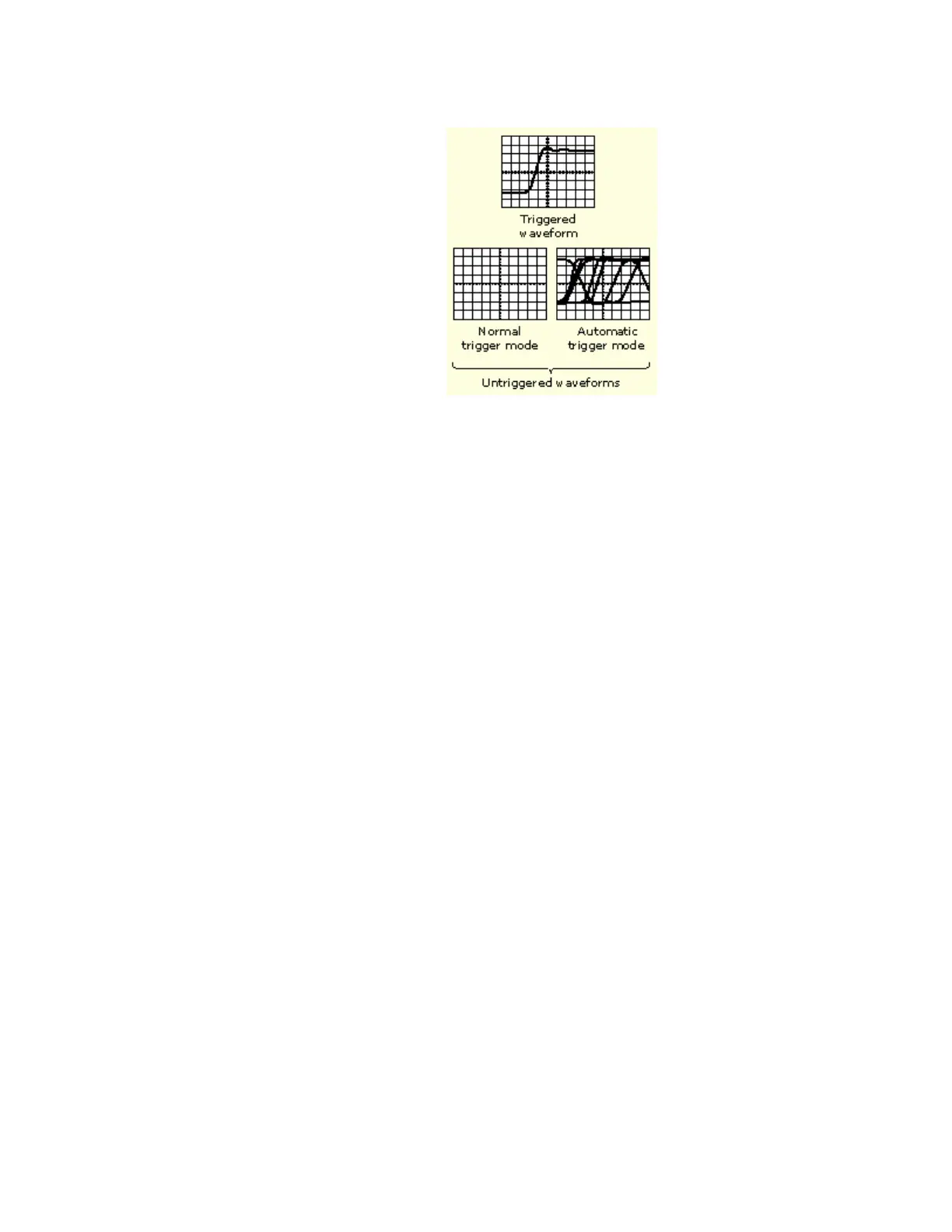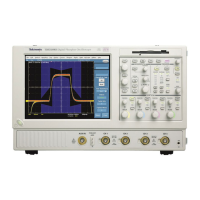237
Triggers create meaningful
waveforms from signal displays.
This instrument has simple edge
triggers as well as a variety of
advanced triggers.
The Trigger Event
The trigger event establishes the time-zero point in the waveform record. All waveform record
data are located in time with respect to that point. The instrument continuously acquires and
retains enough sample points to fill the pretrigger portion of the waveform record (that part of the
waveform that is displayed before, or to the left of, the triggering event on screen). When a trigger
event occurs, the instrument starts acquiring samples to build the posttrigger portion of the
waveform record (displayed after, or to the right of, the trigger event). Once a trigger is
recognized, the instrument will not accept another trigger until the acquisition is complete and the
holdoff time has expired.
Trigger Sources
The trigger source provides the signal that triggers acquisition. Use a trigger source that is
synchronized with the signal that you are acquiring and displaying. You can derive your trigger
from the following sources:
Input channels are the most commonly used trigger sources. You can select any one of the
two or four input channels, depending on your model. The channel that you select as a trigger
source will function whether it is displayed or not.
AC Line Voltage is often used to look at signals related to the power line frequency (for
example, signals from devices such as lighting equipment and power supplies). Because the
instrument generates the trigger from the power line, you do not have to use a channel input.
Auxiliary Trigger (AUX IN) provides a fifth source that you can use as a trigger input when
you need to use the four input channels for other signals. For example, you might want to
trigger on a clock while displaying four other logic signals. To use the auxiliary trigger,
connect the signal to the auxiliary input connector on the front panel. The input connector is
not compatible with most probes, nor can you display the auxiliary trigger signal.
Trigger Types
Edge triggers are the simplest and most commonly used trigger type, used with both analog
and digital signals. An edge trigger event occurs when the trigger source passes through a
specified voltage level in the specified direction (rising or falling signal voltage).
Pulse triggers are special-purpose triggers that are primarily used with digital signals. The
following types of pulse triggers are available: Glitch, Runt, Window, Width, Transition, and
Timeout. Pulse triggers are available on the main trigger only.

